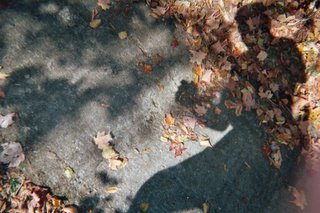
I've just finished reading a fine book called THE PRODUCER AS COMPOSER by Virgil Moorefield (MIT Press). It's a scholarly treatise on the idea that the recording process itself has become inseparable from the act of composition, that a recording is not a "record" of the composition, but is actually the composition itself. Of course, it's not a new idea. But Moorefield is detailed in his observations and analysis; best of all, as a producer/composer himself, he brings plenty of inside knowledge and understanding, which makes the book refreshingly solid and useful.
I've also been delving back into a book called TEMPLES OF SOUND: INSIDE THE GREAT RECORDING STUDIOS(Chronicle Books) by William Clark and Jim Cogan. This one is pure pleasure; not a technical work, but one rich in first-hand stories and insights.( A few nights ago, wired from band rehearsal, I stayed up late and re-read the chapter on Stax-Volt in Memphis. What could be more inspiring and moving than Steve Cropper talking about mixing "Dock of The Bay" right after Otis Redding's death ?)
I've also been reading--mostly in the mornings--Carl O. Sauer's 16th CENTURY NORTH AMERICA. (Univ. Cal. Press ) Sauer writes here with succint focus and elegant, energetic prose about the the European discovery and mapping of the New World. Reading about the finding of new worlds inspires and energizes me.
As for listening, obviously I've been lost in my own music lately. But I have been relaxing with BOOT HEEL DRAG: THE MGM YEARS by Bob Wills and his Texas Playboys. This is late 40s and early 50s stuff, with plenty of swing and old-style Texas fiddling, but also infusions of the country boogie, jump, and rhythm and blues that were in the air during that era. Best of all, it's loaded with great old-style western swing steel guitar. Guys like Herb Remington, Billy Bowman, and Bobby Koeffer packed a lot of energy and musical action into their single -chorus breaks on these tunes. And that lovely sound: a Fender amp breaking up just right as that warm-toned non-pedal steel cuts through with enough edge on the high-end to pack a punch.
I've also been enjoying M. Ward's TRANSISTOR RADIO (Merge Records). His quirky --but very melodic and poetic-- take on Americana and 60s-70s pop is quite engaging. I Get the sense that I might share some musical obsessions with this guy.
Recently I got a package of great stuff to review for DUSTED MAGAZINE. Especially exciting to me is the new one by Chas Smith, DESCENT (Cold Blue Records). Chas is a truly unique and inventive artist who uses steel guitars and an array of astonishing self-built instruments to
realize his singular sonic vision. This record has already grabbed me. I'll post a link to the review when I get it done.




